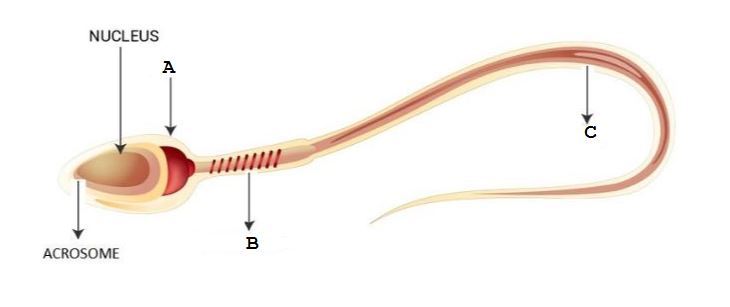8th Grade > Biology
REPRODUCTION IN ANIMALS MCQs
:
A
Animals can reproduce both by sexual as well as asexual means. Simple animals like Hydra, reproduce asexually by the process of budding. Some animals like tapeworms can reproduce both asexually as well as sexually. Higher and more complex animals like birds and mammals can reproduce only by sexual means.
:
B, C, and D
Both frogs and goats reproduce by sexual methods. Planaria can reproduce both sexually and asexually. Amoeba reproduces through binary fission, which is an asexual mode of reproduction.
:
D
Binary fission is a type of asexual reproduction seen in unicellular organisms. In this method, first the nucleus divides followed by cytoplasmic division. This forms two daughter cells from one parent cell. Therefore, Paramecium dividing itself to form two daughter cells represents binary fission.
:
C
In meiosis, four daughter cells are produced. It is also known as reductional division, since the chromosome number gets halved in the daughter cells. For example, if a parent cell with 46 chromosomes undergoes meiosis then the daughter cells will have 23 chromosomes each. Hence, the meiotic daughter cells are also known as haploid cells or gametes.
:
B
The part of a sperm cell which contains the male nucleus is called the 'head' (A). The middle portion (B) is known as the 'middle piece'. It contains mitochondria which provide energy for sperm movement. The last portion (C) is known as the 'tail' and is responsible for sperm motility.
:
A
In internal fertilisation, the survival chances of the zygote are more than external fertilisation. In external fertilisation, the male and female gametes are released into the environment (mostly in water) and fertilisation takes place outside the body of both the parents. Thus, there is a higher chance of the gametes and the zygote getting destroyed by agents like water, wind, heat and predators.
:
B
Blastocyst consists of an outer sphere of cells enclosing an inner cell mass that is destined to be the embryo. It gets implanted in the uterine wall in the 8th day after fertilisation.
:
A and B
Haploid cells have only one set of chromosomes, unlike diploid cells, which have two sets of chromosomes. Haploid cells are formed by meiotic cell division. Both sperm and ovum are haploid cells and are also called gametes.
:
C
Some cells split through a process called budding. The mother cells produces one or more daughter cells or buds. The daughter cell is smaller than the parent organism. E.g.- yeast. These buds or daughter cells grow outside the parent organism.
:
B
Fusion of the male and the female gamete, i.e., the sperm and the ovum, is called fertilisation. This results in the formation of a single-celled zygote. After fertilisation, the zygote divides repeatedly to give rise to a ball of cells. This ball of cells eventually develops into the various types of cells and tissues in an organism.

















